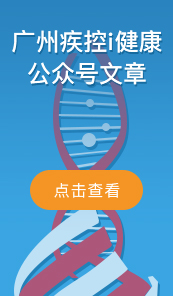由我中心之前的監測來看,2月份流感發病有明顯的增加,往年3月才出現的高峰或提前來到。新情況顯示,甲型H1N1流感占流感樣病例的比例大幅攀升至九成。如何躲過這一“潮流”不被波及,接種疫苗是較好的手段之一,但先前新聞報道的一些接種后出現不良反應,讓人們對甲流疫苗的安全性產生疑慮。適時,新英格蘭雜志網站上刊有一篇對甲型H1N1流感疫苗安全性上市后監測的文章,我們去看看研究得出的結論是怎樣?同時,學習一下該研究的思路和分析方法。感興趣的朋友可以到以下網址查看全文:
http://www.nejm.org/doi/full/10.1056/NEJMoa1008553#t=articleTop
中國對甲型H1N1流感疫苗安全性的上市后監測
Safety of Influenza A (H1N1) Vaccine in Postmarketing Surveillance in
作者:Xiao-Feng Liang, M.D., Li Li, M.D., Ph.D., Da-Wei Liu, M.D., Ke-Li Li, M.D., Wen-Di Wu, M.D., Bao-Ping Zhu, M.D., Hua-Qing Wang, M.D., Ph.D., Hui-Ming Luo, M.D., Ling-Sheng Cao, M.D., Jing-Shan Zheng, M.D., Da-Peng Yin, M.D., Lei Cao, M.P.H., Bing-Bing Wu, M.D., Hong-Hong Bao, M.D., Di-Sha Xu, M.D., Wei-Zhong Yang, M.D., and Yu Wang, M.D., Ph.D.
Abstract
Background
On September 21, 2009,
Methods
We designed a plan for passive surveillance for adverse events after immunization with the influenza A (H1N1) vaccine. Physicians or vaccination providers were required to report the numbers of vaccinees and all adverse events to their local Center for Disease Control and Prevention (CDC), which then reported the data to the Chinese CDC through the online National Immunization Information System's National Adverse Event Following Immunization Surveillance System. Data were collected through March 21, 2010, and were verified and analyzed by the Chinese CDC.
Results
A total of 89.6 million doses of vaccine were administered from September 21, 2009, through March 21, 2010, and 8067 vaccinees reported having an adverse event, for a rate of 90.0 per 1 million doses. The age-specific rates of adverse events ranged from 31.4 per 1 million doses among persons 60 years of age or older to 130.6 per 1 million doses among persons 9 years of age or younger, and the manufacturer-specific rates ranged from 4.6 to 185.4 per 1 million doses. A total of 6552 of the 8067 adverse events (81.2%; rate, 73.1 per 1 million doses) were verified as vaccine reactions; 1083 of the 8067 (13.4%; rate, 12.1 per 1 million doses) were rare and more serious (vs. common, minor events), most of which (1050) were allergic reactions. Eleven cases of the Guillain–Barré syndrome were reported, for a rate of 0.1 per 1 million doses, which is lower than the background rate in
Conclusions
No pattern of adverse events that would be of concern was observed after the administration of influenza A (H1N1) vaccine, nor was there evidence of an increased risk of the Guillain–Barré syndrome.
This article (10.1056/NEJMoa1008553) was published on February 2, 2011, at NEJM.org.
(編輯:劉鵬達)





